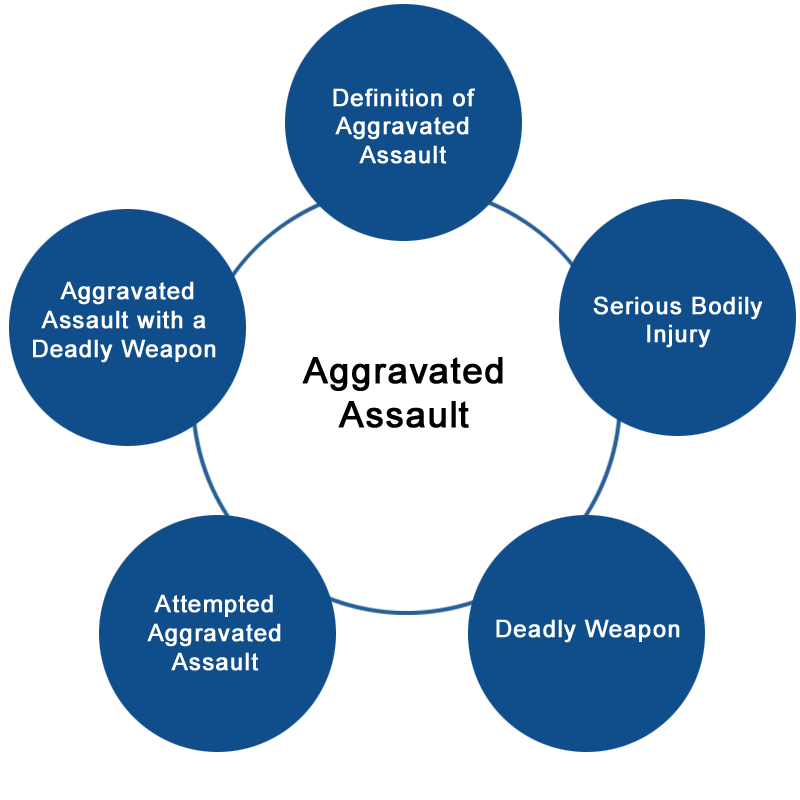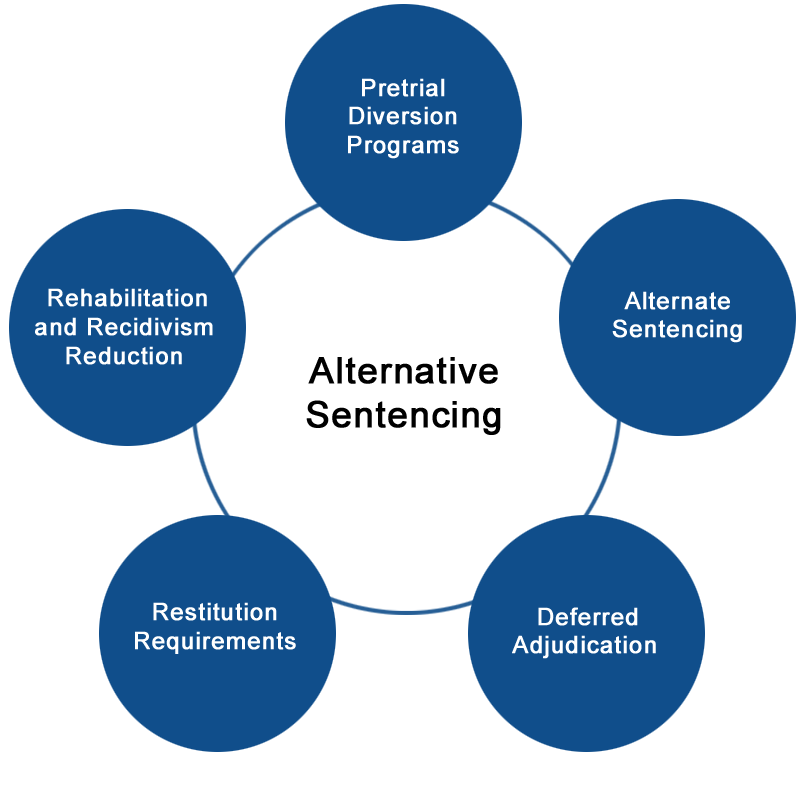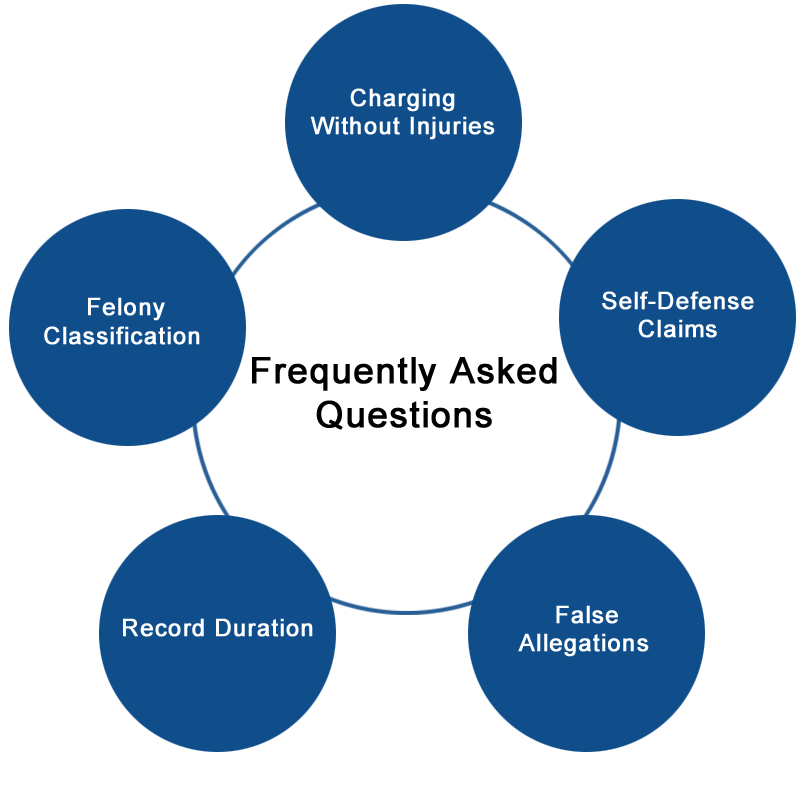Aggravated Assault in Texas
 While it is a commonly used term, “assault” has a specific legal meaning that varies from state to state. In Texas, it is a term that covers every kind of physical violence – be it unwanted physical contact or merely the threat of impending harm. This differs from several other states, which would hold a separate definition for assault and battery. In Texas, crimes that might be considered battery somewhere else would be classified as assault.
While it is a commonly used term, “assault” has a specific legal meaning that varies from state to state. In Texas, it is a term that covers every kind of physical violence – be it unwanted physical contact or merely the threat of impending harm. This differs from several other states, which would hold a separate definition for assault and battery. In Texas, crimes that might be considered battery somewhere else would be classified as assault.
Beyond simple assault, the Texas penal code also holds a separate definition, as described in Section 22.02, of aggravated assault. Essentially, Texas law holds that any offense causing serious bodily injury to another, or one that includes an exhibition of a deadly weapon, can be classified as aggravated assault. As these two tenants are key to defining aggravated assault, they warrant further definition.
- • Serious Bodily Injury encompasses injuries that carry an elevated risk of death or permanent damage. Loss of limbs, broken bones, injuries that require hospitalizations and even internal injuries can all satisfy this requirement of aggravated assault.
- • Deadly Weapon is a term that describes both the item and the intent. A deadly weapon can be one that has an intended use to cause injury – e.g. knives, firearms or clubs. It can also be an otherwise innocuous object that is used with the intention of causing injury, for example a baseball bat or a vehicle.
The definition of assault gets further muddied when you factor in the separate charges of Attempted Aggravated Assault and Aggravated Assault with a Deadly Weapon.
Attempted aggravated assault describes an offense where the assailant did not actually achieve the objection of injuring another but made substantial progress. Brandishing a deadly weapon could also be considered attempted aggravated assault. Aggravated Assault with a Deadly Weapon encompasses these offenses that were carried out with the aid of a deadly weapon, as defined above. Considered a serious felony under Texas law, it carries elevated penalties and prison terms.
The following examples help illustrate the fine differences between these charges. In each example, picture two people, named Sam and Dave, involved in an altercation.
Example No 1: Sam draws a knife and stabs Dave in the leg causing long-term nerve damage. As Sam not only caused serious bodily harm and used a deadly weapon, he could be charged with Aggravated Assault.
Example No. 2: Dave picks up a length of rebar and swings it at Sam’s head, but Sam is able to duck out of the way. Since Dave intended to cause serious physical harm, but failed to, he could be charged with attempted aggravated assault.
Example No. 3: Sam draws a pistol and fires at Dave, missing him. Despite the fact that Dave was unharmed, Sam’s use of a firearm, which poses a greater risk of injury or death than the knife he’d used previously, could lead to a charge of aggravated assault with a deadly weapon.
 Penalties and Consequences for Aggravated Assault
Penalties and Consequences for Aggravated Assault
As Aggravated Assault, Attempted Aggravated Assault and Aggravated Assault with a Deadly Weapon are considered three different charges, each carries progressively higher penalties. While the circumstances of the case and the individual’s criminal history will factor into the penalties for a conviction, the fines and prison terms break down roughly as follows:
- • Aggravated Assault: A second-degree felony, this can lead to fines of up to $10,000 and imprisonment from 2-20 years.
- • Attempted Aggravated Assault: While still considered a felony, an attempted Aggravated Assault conviction will generally carry a shorter prison sentence and lower fines.
- • Aggravated Assault with a Deadly Weapon: Often treated as a first-degree felony, this conviction can lead to up to $10,000 or more in fines as well as a prison term ranging from 5-99 years.
It’s worth repeating that these are general guidelines and may not reflect additional penalties imposed due to the circumstances of the case. A qualified attorney can provide greater insight into potential penalties for each charge.
Beyond fines and jail time, there are several consequences that stem from a conviction on charges of aggravated assault, attempted aggravated assault or aggravated assault with a deadly weapon. Some of the consequences are levied directly by the court, including:
- • Permanent Criminal Record: A conviction will show up on the criminal record of those convicted for the rest of their life, causing long-term hardships and difficulty securing a job or housing.
- • Probation: Levied in addition to, or in some cases instead of, jail time, probation requires strict compliance with conditions set by the court and close supervision by a probation officer.
- • Restitution: Those convicted may be required to financially compensate their victim for any damages or financial losses they suffered as a result of the assault.
Of course, these are just the direct consequences handed down by the court. There are a host of indirect consequences a person convicted of aggravated assault – or any of its variants – may face. These include:
Loss of Rights: Particularly in cases of aggravated assault with a deadly weapon, those convicted may be stripped of civil rights ranging from their right to vote and serve on a jury to their Second Amendment right to bear arms. Those who are non-citizens may be stripped of their immigration status and could face deportation.
Difficulty Securing Employment or Housing: Many employers, landlords and property management firms screen the criminal history of candidates or tenants, denying opportunities to those found to have a violent criminal history. In addition, certain accreditations and licenses may be difficult for those with a conviction to obtain.
Social Stigma: Those convicted may find themselves ostracized from their community, driven out over fears from the community that they might re-offend.
 Defending Against Charges
Defending Against Charges
At the Ken Gibson law firm, we take a meticulous approach to safeguarding your freedom, analyzing all of the evidence, identifying weaknesses in the prosecution’s case, and building a strong defense against these allegations. Our focus from day one is on having your charges reduced or dismissed, and on seeing you exonerated and acquitted. Challenging these charges can take on many forms, including:
Arguing Self-Defense: This not only means showing that you acted to protect yourself, but that you acted in the interest of preserving the safety of those around you and their property.
Challenging the Allegations: By this, we mean establishing an alibi, questioning whether false accusations were made against you, whether you were misidentified as the perpetrator, or whether the prosecution’s evidence fails to meet the burden of proof.
Providing Context: Vital in reducing or dismissing charges, this strategy can involve showing a lack of intention, arguing that you were provoked or coerced into action, or were too intoxicated to intentionally commit the act you’re accused of.
Demonstrating law enforcement missteps: The law provides constitutional protection against police overreach, and showing that law enforcement failed to read Miranda rights, didn’t act within the time constraints of the statute of limitations, used excessive force or otherwise violated those constitutional rights can lead to better outcomes for those accused.
What the Prosecution Must Prove
The burden of proof rests with the prosecution, so it is on them to demonstrate beyond a reasonable doubt that the accused not only committed the act, but did so in a way that justifies any enhanced charges such as aggravated assault, attempted aggravated assault or aggravated assault with a deadly weapon. Each charge carries its own threshold for proof as well as its own conditions. For example:
Aggravated Assault Charges: The prosecution must show that the act was intentional; that the defendant’s actions resulted in serious bodily harm or that they displayed a deadly weapon during the incident; and that the defendant was mentally capable, aware and intentional in their actions.
Attempted Aggravated Assault Charges: The prosecution must show that, although the attempt was unsuccessful, the intention existed to commit an assault leading to serious bodily harm and that the defendant took substantial steps toward committing the crime, e.g. making threats, procuring a weapon or premeditating the attack.
Aggravated Assault with a Deadly Weapon Charges: The prosecution must show that the defendant used or displayed a deadly weapon during the incident, did so with full intention and acknowledgment of the danger their actions posed, and that the victim feared they were in danger of imminent bodily harm.
These are all general guidelines of what the prosecution must prove, covering the core elements of Texas law, but specifics may vary from jurisdiction to jurisdiction.
 Seeking Alternative Sentencing
Seeking Alternative Sentencing
Texas law allows those who have been convicted of a crime to serve their sentence in a variety of ways besides imprisonment. Aimed toward rehabilitation, these programs help those convicted repay their debt to society while lowering their risk of recidivism. A few options available include:
Pretrial Diversion Programs: In some cases, these programs can help avoid prosecution in the first place, entering defendants into court-mandated mental health treatment, drug and alcohol aversion programs, anger management counseling, or counseling and educational training.
Alternate Sentencing: Rather than be incarcerated, those convicted may be allowed to complete a court-monitored probation period, perform community service, or be placed under house arrest. Each requires regular check-ins and abstaining from further criminal activity, and is closely monitored by agents of the court.
Deferred Adjudication: In some cases, it may be possible to see charges dismissed altogether following a period of deferred adjudication in which the defendant is required to fulfill certain obligations and conditions as defined by the court. Once those terms have been met, the charges can be reduced.
Keep in mind that in addition to jail time, some convictions may carry a requirement for restitution, mandating that those convicted compensate their victims for any financial losses they suffered as a result of the crime.
Frequently Asked Questions
Can I be charged with aggravated assault, attempted aggravated assault or aggravated assault with a deadly weapon if there were no injuries?
As Texas law defines these charges so broadly, yes. There are several factors that go into the decision to charge an individual, including merely the display of a deadly weapon and the intention to cause injury. With so many of these charges stemming from domestic violence cases, the emotions behind the confrontation can easily elevate the situation to a case of aggravated assault even without physical harm.
What if I acted in self-defense?
Under Texas law, it is possible to claim self-defense against charges of aggravated assault, attempted aggravated assault or aggravated assault with a deadly weapon. The defendant need only demonstrate to the court’s satisfaction that they acted in order to protect themselves, those around them, or their property.
Are false allegations common in aggravated assault charges?
While not every case of aggravated assault stems from false allegations, it is unfortunately common for a victim to make false or exaggerated claims about their alleged assault. Disproving these allegations can be difficult due to the heightened emotional nature of most incidents, but is possible through surveillance footage, eyewitness testimony and other evidence.
How long do charges stay on your record?
Charges of aggravated assault, attempted aggravated assault or aggravated assault with a deadly weapon will stay on your record permanently, unless expunged or sealed by the court. There are several criteria that would need to be met for charges to be subjected to expungement, however.
What’s the difference between first-degree and second-degree felony assault?
As all three charges – aggravated assault, attempted aggravated assault and aggravated assault with a deadly weapon – are considered felonies under Texas law, it’s worth understanding the types of felonies that Texas law allows for. Depending on the circumstances of the case, you could be charged with a first- or second-degree felony. First-degree felony charges carry significantly higher fines and prison terms than second-degree charges, and often require demonstrating substantial harm or injury to the victim.
Defending your Rights
The Law Office of Ken Gibson has established a winning track record of securing the best outcomes against countless charges of aggravated assault, attempted aggravated assault or aggravated assault with a deadly weapon. We win by being more prepared than the prosecution, pursuing every aspect of your case and developing a better grasp of the facts and evidence.
Because our job is to defend your reputation, protect your freedom, relieve the burden of an intense legal battle, and ultimately secure the best outcome for you. If you’ve been charged with aggravated assault, attempted aggravated assault or aggravated assault with a deadly weapon, schedule a confidential, no-obligation consultation with our attorneys today.
Call 1 (866) 875-5996 or Schedule a Free Case Evaluation Online

